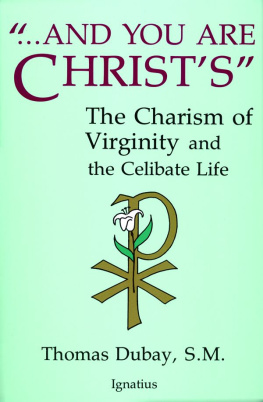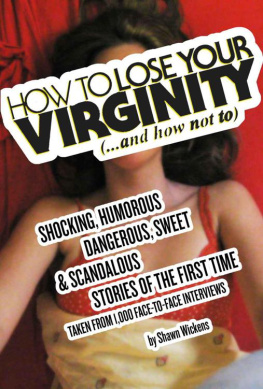
Borderline Virginities
How and why did virginity come to play such a crucial part in the Christian Church in the formative and defining period of Late Antiquity? Sissel Undheim analyzes the negotiations over what constituted virginity and assesses its socio-religious value in fourth-century Rome by looking at those at the very margins of virginity and non-virginity. The Church Fathers efforts to demarcate an exclusively Christian virginity, in contrast to the false virgins of their pagan adversaries, displays a tension that, it is argued, played a larger role in the construction of a specifically Christian sacred virginity than previous studies have acknowledged.
Late fourth-century Christian theologians persistent appraisals of sacred virgins paved the way for a wide variety of virgins that often challenged the stereotype of the unmarried female virgin. The sources abound with seemingly paradoxical virgins, such as widow virgins, married virgins, virgin mothers, infant virgins, old virgins, heretical virgins, pagan virgins, male virgins, false virgins and fallen virgins. Through examining these kinds of borderline virgins as they appear in a range of textual sources from varied genres, Undheim demonstrates how physical, cultural and cognitive boundaries of virginity were contested, drawn and redrawn in the fourth and early fifth centuries in the Latin West.
Sissel Undheim is Associate Professor of Religious Studies at the University of Bergen, Norway. Her academic work focuses on sacred virginity in antiquity and Late Antiquity, and she has published various articles on this topic, as well as on New Age religion and the didactics of religion. She has edited a collection of translated texts on Roman religion for the Norwegian series Verdens Hellige Skrifter (Sacred Texts of the World).
Borderline Virginities
Sacred and Secular Virgins in Late Antiquity
Sissel Undheim
First published 2018
by Routledge
2 Park Square, Milton Park, Abingdon, Oxon OX14 4RN
and by Routledge
711 Third Avenue, New York, NY 10017
Routledge is an imprint of the Taylor & Francis Group, an informa business
2018 Sissel Undheim
The right of Sissel Undheim to be identified as author of this work has been asserted by her in accordance with sections 77 and 78 of the Copyright, Designs and Patents Act 1988.
All rights reserved. No part of this book may be reprinted or reproduced or utilised in any form or by any electronic, mechanical, or other means, now known or hereafter invented, including photocopying and recording, or in any information storage or retrieval system, without permission in writing from the publishers.
Trademark notice: Product or corporate names may be trademarks or registered trademarks, and are used only for identification and explanation without intent to infringe.
British Library Cataloguing-in-Publication Data
A catalogue record for this book is available from the British Library
Library of Congress Cataloging-in-Publication Data
Names: Undheim, Sissel, author.
Title: Borderline virginities: sacred and secular virgins in late antiquity / Sissel Undheim.
Description: First [edition]. | New York: Routledge, 2017. |
Includes bibliographical references.
Identifiers: LCCN 2017003401| ISBN 9781472480170 (hardback: alk. paper) |
ISBN 9781315569734 (ebook)
Subjects: LCSH: VirginityReligious aspectsChristianityHistory of
doctrinesEarly church, ca. 30-600. | Church historyPrimitive and early
church, ca. 30-600. | VirginsRomeHistory.
Classification: LCC BR195.C45 U53 2017 | DDC 248.4/7dc23
LC record available at https://lccn.loc.gov/2017003401
ISBN: 978-1-4724-8017-0 (hbk)
ISBN: 978-1-315-56973-4 (ebk)
Typeset in Bembo
by Cenveo Publisher Services
Contents
Every day during my last two years in high school, I passed beneath Jay DeFeos two monumental paintings that hung on the walls in Kristiansand Katedral Schools spacious staircase. The impact of this impressive diptych became even more alluring once I learned what the artist had called her paintings: The Wise and Foolish Virgins.
In retrospect, it seems like this is in fact where this book project must have started, in my high schools collection of Beat art. Growing up in protestant, secular Scandinavia, DeFeos intriguing paintings and their title subtly suggested to me a vast, yet mainly unknown, terrain of cultural history where virginity was inextricably tied to gender, aesthetics, authority, and sexuality, but also to religion; to damnation and salvation.
Several years later, stumbling upon Mary Beards mind-expanding article Re-reading (Vestal) virginity as a Masters student, I discovered some theoretically and methodologically fascinating new approaches to the study of not only Vestal virgins, but also other notions of sacred virginity in the Mediterranean region. In her article, Beard concluded that gendered, social categories of anthropology and sociology may not be enough when analyzing this specific Roman, female priesthood:
The Vestals [] can be seen not merely as a parade of anomaly, but a focus of negotiation around the category of virginity, a negotiation of the boundary between virginity and non-virginity.
(1995: 172)
Similar to the effect of DeFeos stark visual contrast between TheWise and The Foolish Virgin, Beard turned my attention to the cultural construction of virginity, a much more complex and fascinating field than I had ever imagined. This quote by Beard, then, must therefore be credited as the starting, as well as the pivotal, point for this books topic. The aim of the following explorations is thus to better understand how the cultural discourses and negotiations over sacred virgins virginity that Beard saw in the Roman discourses on Vestal virgins, can also shed light on the virgin craze of the fourth-century Church Fathers. The book has been written over the course of a long time span, starting years back with my discovery of the Vestal Virgins as a Masters student in the history of religions at the University of Oslo, and then through my PhD studies at the University of Bergen.
My deepest gratitude goes to my relentlessly encouraging, inspiring, and patient mentor Professor Ingvild Slid Gilhus, who has contributed to this project in countless ways over the years. This book would never have been completed without her invaluable comments and support.
During my first years at the University of Bergen, as a PhD student, I was so fortunate to be a part of the interdisciplinary Program for the Study of Ancient Christianity (PROAK). This gave me the opportunity to present preliminary texts at a number of seminars and conferences. I therefore wish to thank Professors Einar Thomassen, Jostein Brtnes, Lisbeth Mikaelsson, Tor Hauken, Karstein Hopland, and the late Tomas Hgg, for their comments and support. The same gratitude goes to my then co-fellows at the institute; Jonas Bjrnebye, Mona Farstad, Gina Dahl, Liv Ingeborg Lied, Hugo Lundhaug, Aslak Rostad, Karl Johan Skeidsvoll, and Thea Selliaas Thorsen, with whom I shared many inspiring discussions, as well as the wonderful PROAK excursions to ancient sites around the Mediterranean. Professors Halvor Moxnes and the late Turid Karlsen Seim, as well as Marianne Bjelland Kartzow and Rebecca Solevg, were, through related projects and seminars, part of PROAKs extended family and the encouraging group of Early Christianity researchers in Norway, from which conversations I profited greatly.












